I grow hundreds of pounds of food every year, have no root cellar and just one refrigerator. So how do I do it? Like this.
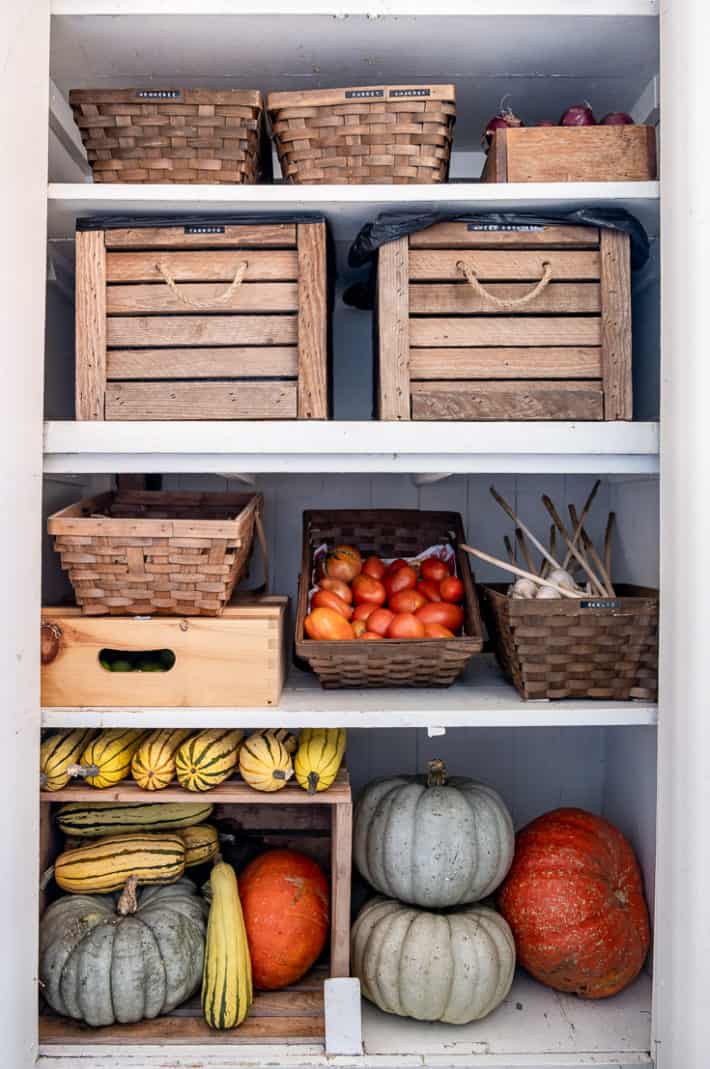
First of all I'm going to say this is how I store my stuff. Someone reading this from an extension office is probably trying to look at the above photo but can't because their eyes are bleeding.
Like you (and this is going to come as a very big surprise) I do not have 10,000 square feet of climate controlled keeping rooms. I know. It's the one thing I haven't built.
We're not survivalists or vegetable wholesalers, we're home owners who have a vegetable garden or bought a massive bag of carrots on sale at the grocery store and want to know how we can store them. Right?
Right. And it's easy! You're going to need a shovel, maybe a backhoe, a very large hill (preferably near your kitchen) and about 4 days to dig a root cellar into it. Just kidding. It'll take you weeks. Just kidding. You don't need to do that Homesteader Hazel.
I'm going to outline all of the ideal ways to store your vegetables and then your job is to figure out how to get as close to that as possible.
In general, so you can get your mind twirling, the best areas for long term food storage are cool, but not freezing. For me that means my mudroom.
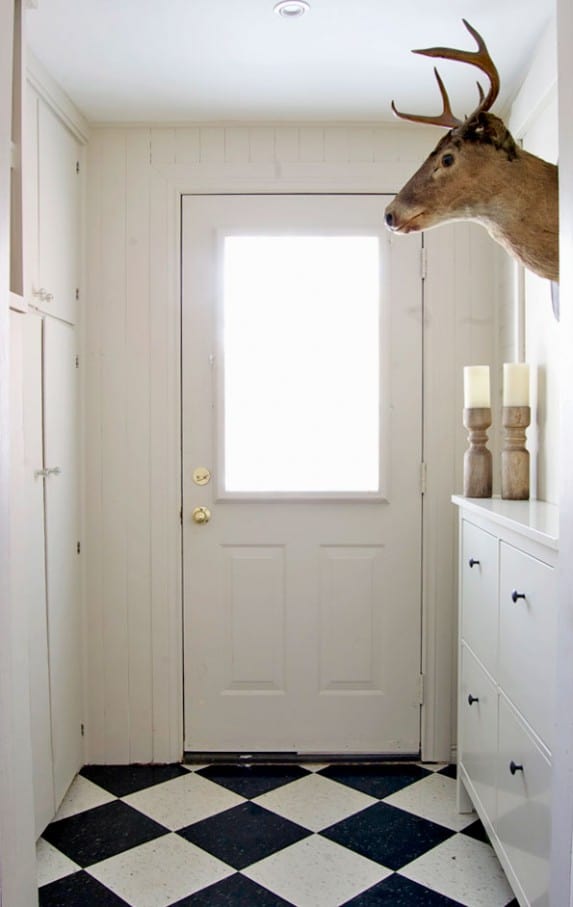
The pantry to the left of the door is where all the storage happens. The mudroom is uninsulated so it gets VERY cold in my zone 6b winter. To keep everything above freezing I use a space heater.
I also use a wireless thermometer almost exactly like this one so I can monitor if the pantry is getting too cold.
Here, are dream world, ideal conditions for vegetables and how long they'll last in those conditions.
If the table looks screwy on your phone or tablet, turn your device sideways.
Table of Contents
Long Term Vegetable Storage
| TEMP. | HUMIDITY | VEGETABLE TO STORE | MONTHS |
| 32-40 | HIGH (95%) | Beets | 5 |
| 32-40 | HIGH (95%) | Brussels Sprouts | 1 |
| 32-40 | HIGH (95%) | Carrots | 8 |
| 32-40 | HIGH (95%) | Cabbage | 5 |
| 32-40 | HIGH (95%) | Parsnips | 4 |
| 32-40 | LOW (65%) | Onions | 4 |
| 32-40 | HIGH (95%) | Kohlrabi | 2 |
| 40 | HIGH (90%) | Potatoes | 6 |
| 50-60 | LOW (65%) | Winter Squash | 2-6 |
| 50-60 | LOW (65%) | Garlic | 4-8 |
| 55-60 | HIGH (95%) | Sweet Potatoes | 6 |
O.K., so from the table you can see that you have 2 categories. Vegetables that like really cold temperatures, and vegetables that like warmer temperatures.
Cold storage vegetables
Beets, brussels sprouts, carrots, cabbage, parsnips, onions and kohlrabi, potatoes.
Cool storage vegetables
Winter squash, sweet potatoes, garlic.
So WHERE are you going to put all this stuff since we've established you're a ridiculous slacker who doesn't want to dig a root cellar.
COLD STORAGE IN A TYPICAL HOUSE
Cold storage means the temperature is *around* freezing but never below.
- garage
- insulated shed
- uninsulated mudroom
COOL STORAGE IN A TYPICAL HOUSE
Cool storage means much cooler than how you keep your house, but not close to freezing.
- Back of a kitchen cupboard on an outside wall.
- Inside a closet with a door on an outside wall.
- Certain areas of basement.
- Whatever room or area in your house that makes you think ... it's cold in here.
When I first harvest I keep everything in my mudroom until real Canadian winter weather hits. When the weather turns, usually around late October or November, the cold susceptible winter squash and sweet potatoes get moved to - my bedroom closet.
There are a few tricks in addition to the right temperature and humidity to keep your vegetables in good condition.
How to store squash
- Store long term at 10C-15C (50F-60F)
- Cure your squash before trying to store them. They should be cured for 10-14 days at a temperature of 80F and 80% humidity. The easiest way to do that is to put them in a plastic bin with a towel thrown overtop right next to your furnace or heating vent. Check daily.
- Spray or dip the squash into a solution of water with bleach. 10:1 ratio. I just fill my sink up and do a small glug (¼ cup?) of bleach. Dip for a few seconds making sure all the surface has been touched, remove and let dry before storing.
- Check squash for any spots, sounds or signs of rot. Use those squash first and keep them away from all of the good squash.
- Store squash off the ground with air circulation underneath them.
- Don't allow them to touch. If you have to stack them put a layer of newspaper in between them.
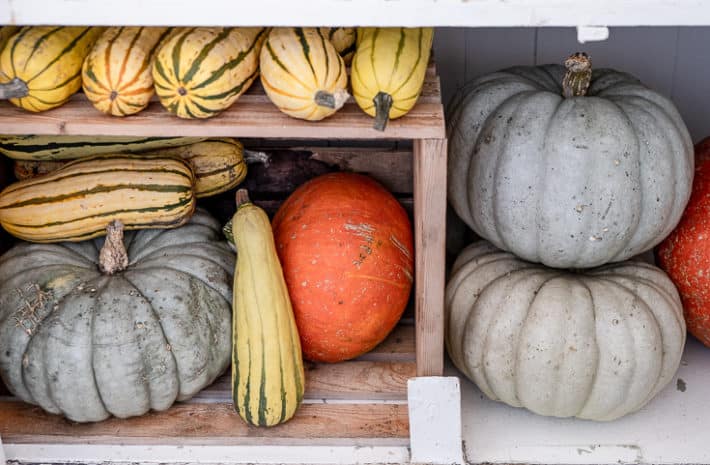
This is a horrible example of how to store squash, but that's how they're stored in my house until it gets cold out.
How to store sweet potatoes
- Store squash at 13C-15C (55F-60F)
- Before storing sweet potatoes need to cure to develop a tough skin AND to sweeten. Fresh dug sweet potatoes aren't sweet. Cure for 10 days at a temperature of 85 F with 85% humidity. To get as close as possible put them in a plastic bin with a loose lid or towel across the top near a furnace or register.
- Store sweet potatoes at recommended temperature after the 10 day curing process but DON'T EAT THEM YET. They need another 30 days in storage to develop their trademark sweet flavour.
- Make sure they have air circulation and if layered, separated by newspaper in between layers.
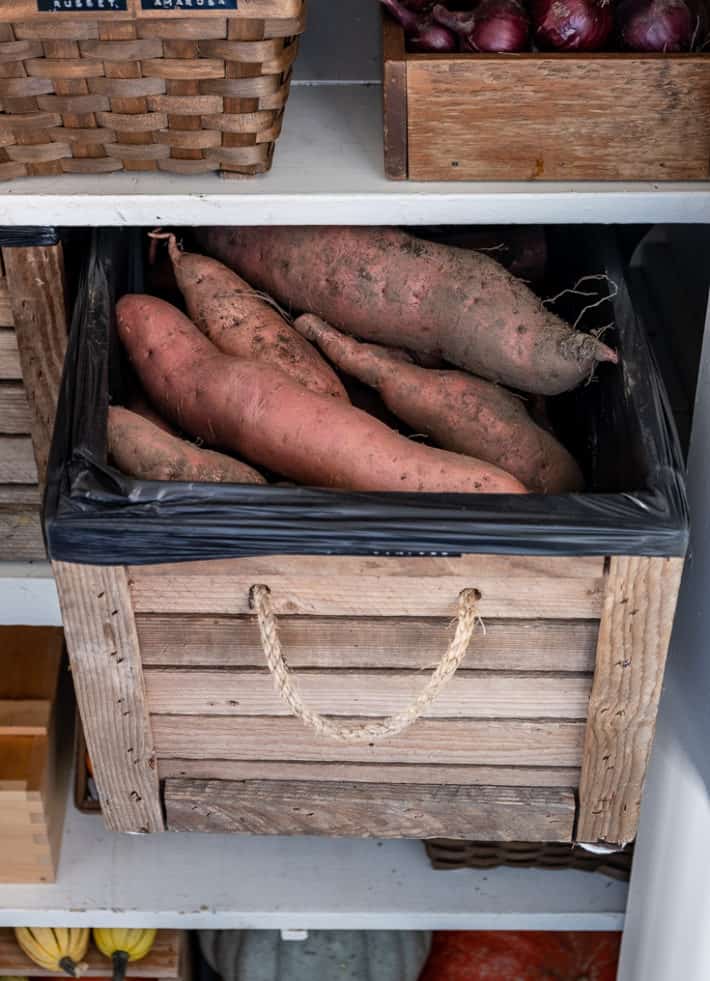
How to store onions
- Store onions between 0C-4C (32F-40F)
- Before storing, cure onions by allowing them to air dry in the shade outside or in a shed. Necks should be completely dried out before you cut them off and store them.
- Any onions with very thick necks are called bullnecks and they will never cure properly, so eat them first.
- Store onions with a lot of air circulation around them so in a slatted wood box or mesh bag.
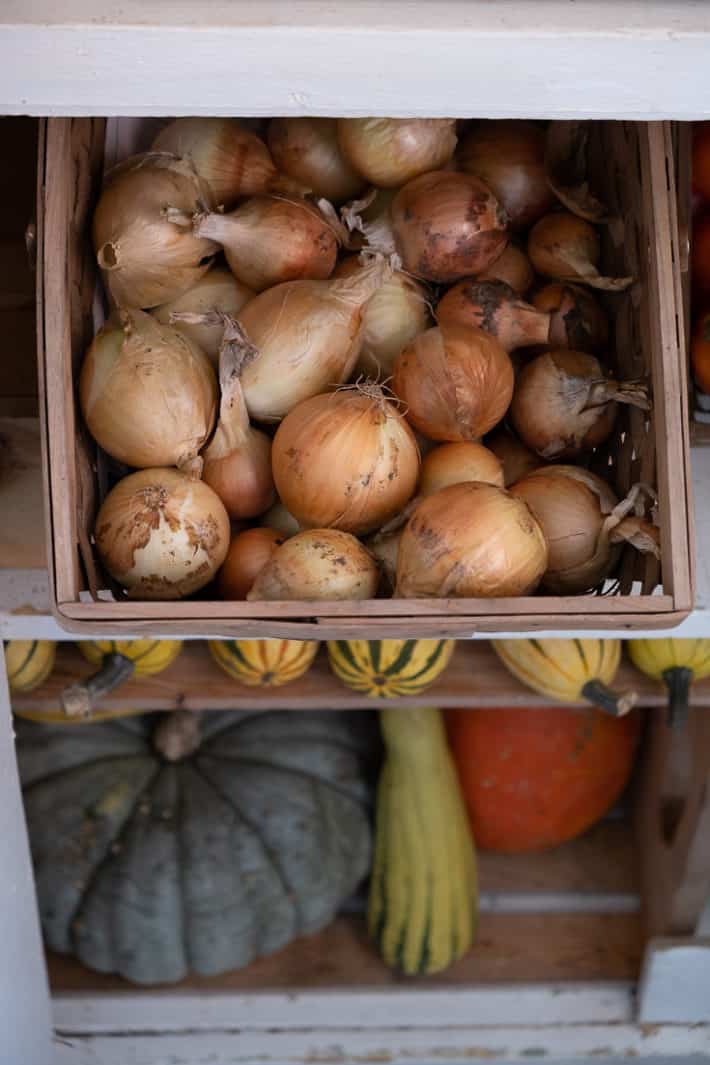
How to store carrots (& beets)
- Store carrots between 0C-4C (32F-40F)
- Cut the entire green portion of the carrot and beet tops off including a tiny bit of the shoulders. If you don't, the carrots will sprout and start to grow again.
- Store purple carrots away from orange carrots. Purple carrots rot faster.
- Store carrots in damp peat moss or sand. The reason for this is so the carrots don't dry out and become limp. Stored this way in a cold area they'll stay perfectly crisp for months.
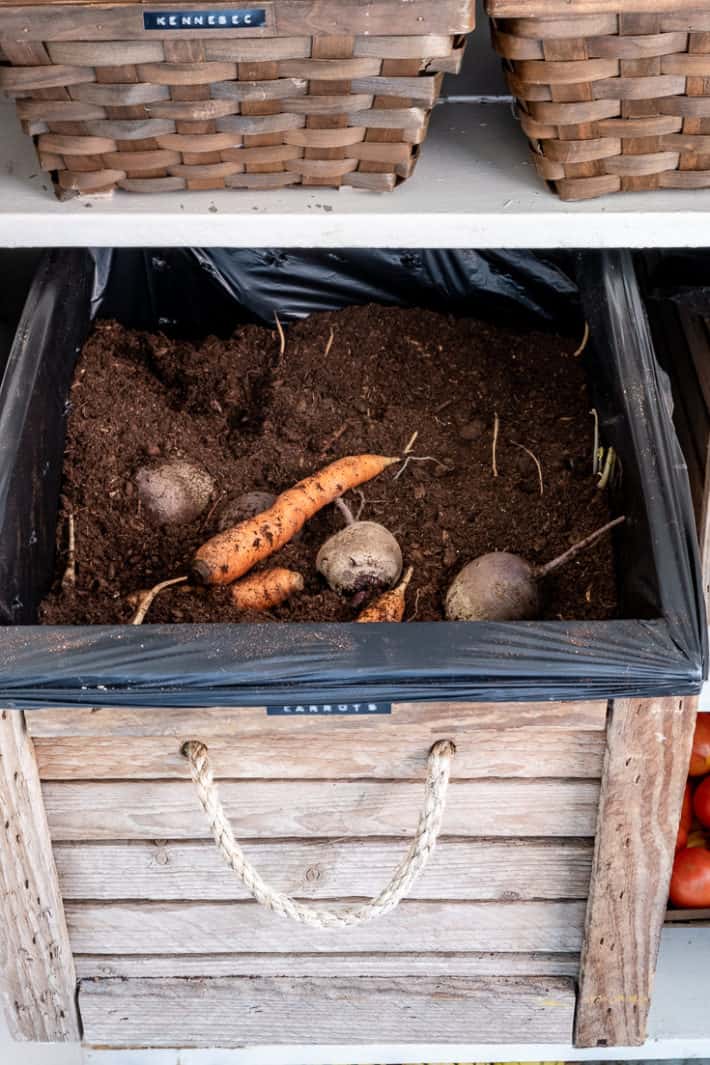
How to store potatoes
- Store potatoes at 4C (40F) if you can. Slightly above is better than slightly below. Once potatoes get near freezing their starches convert to sugars and they get sweet.
- Keep spuds in a ventilated crate like these or mesh bag. You know how potatoes used to be sold in burlap bags? That's a good way to store them.
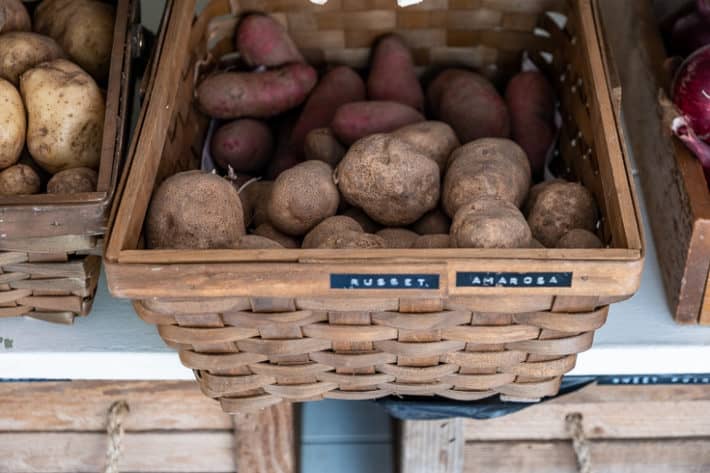
How to store tomatoes.
Don't throw away all those green tomatoes at the end of the season! I know you're sick of them now, but later on you'll be happy you have them.
- Store green tomatoes at 13C-15C (55F-60F) to ripen slowlyyyyyyy. In a month or so.
- Store green tomatoes at around room temperature to get them to ripen more quickly. 1-2 weeks.
- Store barely red tomatoes at around 55-60 to prolong their life and stop them for continuing to ripen too quickly.
- Store tomatoes in a single layer if you can, but no more than a double layer with a thick section of newspaper in between them.
- Check them regularly to get rid of any that are rotting or are showing signs they won't ripen.
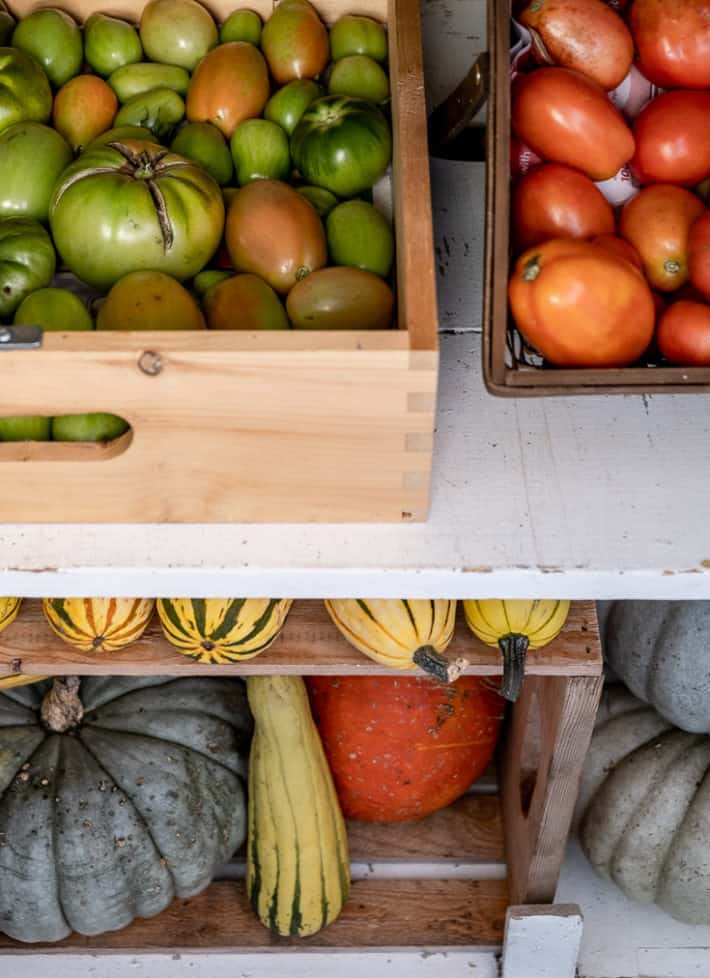
How to store cabbage
- Store cabbage at 0C-4C (32F-40F)
- Store them in the garden as long as possible. Cabbage can handle temperatures as low as -7C (20F) and are perfectly happy right there in the ground.
- If your winter temperatures dip below that pull the cabbage, wrap each in newspaper to help preserve some moisture in them and store.
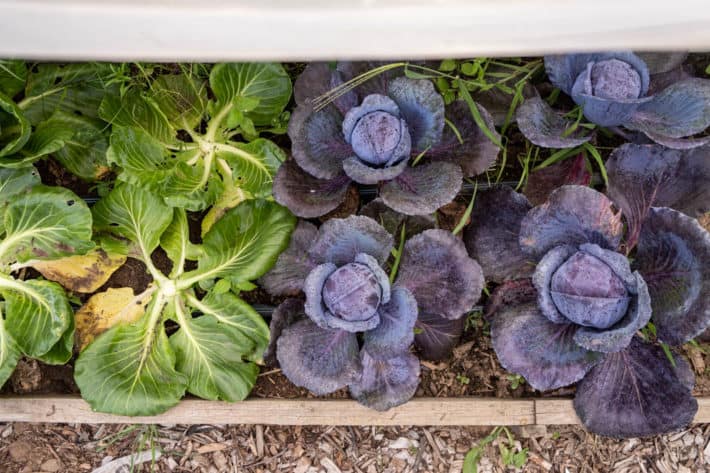
You're never going to be able to get ideal storage conditions for everything so just calm down.
You just need to get close. The closer you get to ideal conditions the longer the vegetables will last. If you notice something starting to rot - get rid of it. Rot creates rot.
Which is a good lesson not only with vegetables, but in life. Good breeds good. And rot breeds rot.
Get rid of the rot and embrace the good for your own long healthy and happy life.
→Follow me on Instagram where I often make a fool of myself←

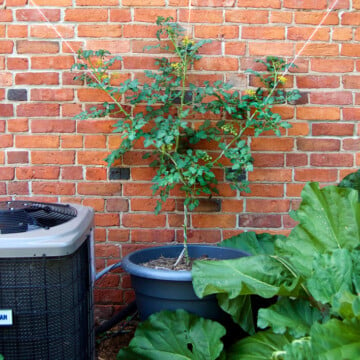

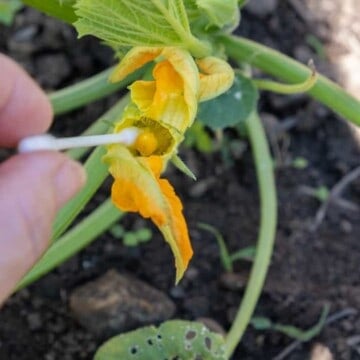
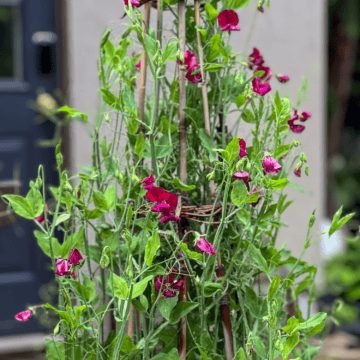
Thank you so much for this information and they way it’s written. So entertaining and informative.
You're welcome Jennifer, thanks for saying so! ~ karen
Thank you for this post! We have a winter CSA and storage is always a problem because winter veggies are too big to all fit in a refrigerator crisper. Now am inspired to set up a better space for everything instead of keeping an old cooler on the back porch for the overflow.
The old cooler on the back porch seems perfect to me! (granted I would need dozens and dozens of coolers but for CSA overflow it sounds great! ~ karen
These storage conditions could never be met at my home in Tucson.
Can I store my stuff at your place and get a delivery once a month?
I planted my first proper Fall garden, but I'm struggling with what I'm going to do with the surplus of veggies we will inevitably have beyond what we can eat. Of course, we can give away to friends & family...but I wish we could store. I am already wrapping my mind about things that can be canned, or otherwise preserved.
I live in The Bahamas, zone 10 - where even in "winter" our highs are close to 80*F...so is there any option for long term storage? Even if I ran my AC as cold as it can go, it wouldn't get any lower than maybe 65*F, but it would burn a ton of electricity, thus canceling out any savings on growing my own veg...
Hi Laura! I'm guessing that maybe in the Bahamas you can grow year round so you mightn't need to store vegetables in the same way as we do here. Just about everything can be frozen or canned though. I can peaches, green beans, tomatoes, tomato sauce, chili sauce, pickles etc. etc. You can freeze all your greens by quickly blanching them first and tomatoes can be frozen too. For things like pumpkin/squash they'll still store for quite a while in your home with regular air conditioning on. Ditto for potatoes. They just won't store as long as they would if you had them in a colder room. :) ~ karen!
HI Karen,
This is a related question, and I know you will have advice and an answer.
My question revolves around harvesting herbs, specifically thyme and oregano, of which we have a lot because we grow alot. They are major ingredients in a dish I like to make in the winter, but I hate paying for fresh herbs which are expensive. I'd rather try to store or process them.
I can pick and dry the stems with leaves on them, and then run my fingers over them (imagining they are Idris Elba's hair), and collect the leaves that fall off. I can grind them up using my son's confiscated weed grinder. Is there a better way to do this?
I know you will have an answer. The best and rightest answer.
Thanks, -kunyi
I'm not Karen and I don't have the best and rightest answer, but I just LOVE your proposed method - ROFL! :):):) Thanks for the giggles this morning!
Hi Kunyi! That's the way to do it. :) For bigger leaves like rosemary or sage I remove the leaves and then dry them. For things with smaller leaves like thyme and oregano I dry then on the stems. When everything is dry I strip the leaves and grind them. For optimal freshness store the fully dried, whole leaves and grind just before using. I use my dehydrator to speed up the drying process. ~ karen!